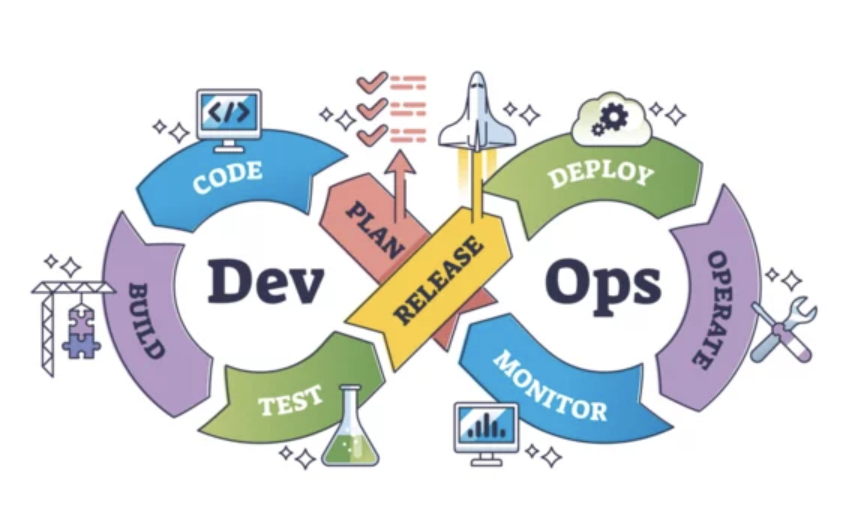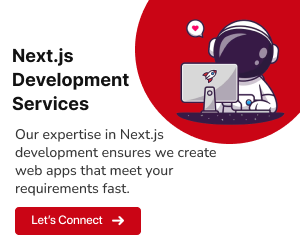Introduction
DevOps adoption has become a critical priority for organizations aiming to enhance their software development and delivery processes. However, like any transformative endeavor, implementing DevOps comes with associated costs. In this comprehensive guide on the cost to implement DevOps, we’ll delve into the various factors that contribute to the cost of implementing DevOps in your organization. Whether you’re a small startup or a large enterprise, understanding these cost considerations will help you make informed decisions on your DevOps journey.
Assessing Your Current State for DevOps Implementation

Assessing your organization’s current state is a fundamental step in the DevOps implementation journey. It serves as the compass that guides you towards effective and efficient adoption of DevOps practices. In this comprehensive assessment, you evaluate your existing processes, tools, and workflows to identify areas that can benefit from DevOps transformation. By doing so, you gain clarity on where to allocate resources, pinpoint bottlenecks, and enhance collaboration between teams. This article dives deep into the importance and strategies for assessing your current state before embarking on the DevOps path.
The Necessity of Assessment
DevOps is not a one-size-fits-all solution. Its effectiveness in your organization depends on various factors, including the size and complexity of your operations, your existing infrastructure, and the specific challenges you face. An accurate assessment of your current state allows you to tailor your DevOps approach to address your unique pain points, leverage existing strengths, and align with your business goals.
Evaluating Existing Processes and Tools
Start your assessment by gaining a deep understanding of your current software development and delivery processes. This involves examining the end-to-end journey of your applications, from initial development to deployment and maintenance. By mapping out your processes, you’ll be able to:
Identify Manual and Time-Consuming Tasks:
Uncover Bottlenecks:
Assess Collaboration and Communication:
One of the primary goals of DevOps is to automate manual and time-consuming tasks. Identify processes that require significant human intervention and those that are prone to errors. These areas often present the most significant opportunities for improvement.
Bottlenecks are points in your processes where work piles up, causing delays. They can occur in various areas, such as testing, deployment, or communication between teams. Identifying bottlenecks helps you focus your DevOps efforts on streamlining these critical areas.
Effective collaboration and communication between development and operations teams are at the heart of DevOps. Evaluate how well these teams interact and share information. Are there silos that hinder the flow of communication? Identifying these barriers is crucial for breaking them down.
Identifying Pain Points and Bottlenecks
DevOps aims to address pain points and bottlenecks in the software development lifecycle. These pain points might be causing inefficiencies, delays, or quality issues. During your assessment, consider:
Lengthy Manual Deployment Processes:
Frequent Manual Testing and Debugging:
Lack of Visibility:
Coordination Challenges:
If your deployment processes involve numerous manual steps, they are likely candidates for automation. Manual deployments are not only time-consuming but also error-prone.
Continuous testing is a core DevOps practice. If your testing processes rely heavily on manual testing and debugging, it’s an area where automation can significantly enhance efficiency and reliability.
Visibility into the status of development and operations activities is essential for making informed decisions. If you struggle to track progress, identify roadblocks, or foresee potential issues, improving visibility should be a priority.
Coordinating releases between development and operations teams can be challenging, especially if it involves complex, error-prone manual processes. Look for opportunities to streamline release coordination through automation and collaboration.
Prioritizing DevOps Initiatives
After assessing your current state and identifying pain points and bottlenecks, you’ll have a clearer picture of where to prioritize your DevOps initiatives. It’s essential to categorize these initiatives based on their potential impact and feasibility. Here’s a framework to help you prioritize:
Impact Analysis:
Feasibility Assessment:
Quick Wins vs. Long-Term Strategy:
Evaluate the potential impact of each DevOps initiative on your organization’s goals and objectives. Some initiatives may have a more significant influence on factors like time-to-market, quality, or cost reduction. Others may offer incremental improvements.
Assess the feasibility of implementing each initiative. Consider factors such as the complexity of the changes required, the availability of necessary skills, and potential resistance to change within your organization. Some initiatives may be relatively straightforward to implement, while others may require more significant transformations.
Differentiate between quick wins and long-term strategic initiatives. Quick wins are relatively simple, low-risk changes that can deliver immediate benefits. Long-term strategic initiatives may involve more extensive changes and take more time to implement but offer substantial, lasting improvements.
By categorizing your DevOps initiatives based on impact and feasibility, you can create a prioritized roadmap that guides your implementation efforts. This roadmap ensures that you address the most critical pain points first and progressively work towards more comprehensive DevOps transformation.
The Role of DevOps Assessment Tools
In your assessment journey, you can leverage various DevOps assessment tools and frameworks designed to evaluate your current state comprehensively. These tools often provide structured questionnaires, metrics, and best practice guidelines to help you identify areas for improvement. Examples of such assessment tools include:
DevOps Capability Assessment
DevOps Assessment from Leading Practices
Value Stream Mapping
The DevOps Capability Assessment (DCA) is a self-assessment framework that evaluates an organization’s DevOps maturity across key capabilities. It helps organizations identify strengths and weaknesses and provides guidance on areas to prioritize for improvement.
This assessment tool offers a set of questions to evaluate your organization’s DevOps practices across categories like culture, automation, measurement, and sharing. It provides a scorecard that highlights areas needing attention.
Value Stream Mapping (VSM) is a technique used to visualize and analyze the steps involved in delivering value to customers. It helps identify bottlenecks, waste, and opportunities for improvement in your software delivery process.
By utilizing these assessment tools, you can enhance the depth and accuracy of your evaluation, making it easier to identify areas that require immediate attention and develop a roadmap for your DevOps journey.
Also read: Strategic Hiring: Building a High-Performing DevOps Team for US Businesses
Cost Factors in DevOps Implementation

DevOps adoption has become essential for organizations aiming to stay competitive in the fast-paced world of software development. While the benefits of DevOps, such as faster time-to-market and improved software quality, are well-documented, it’s equally important to understand the cost factors associated with its implementation. By comprehensively assessing these costs, organizations can make informed decisions, allocate resources effectively, and ensure a successful DevOps transformation. In this article, we’ll explore the various cost factors to consider when implementing DevOps in your organization.
Infrastructure Costs
Infrastructure costs are a fundamental component of DevOps implementation. These costs encompass both hardware and software elements, which serve as the foundation for your development and operations activities. Here are the key infrastructure cost considerations:
Hardware and Software
Networking Equipment:
Adequate networking infrastructure is crucial for seamless communication between development and operations teams and for efficient data transfer.Storage:
As your data and code repositories grow, you may need to invest in additional storage solutions to accommodate the increased load.Software Licenses:
Depending on your software stack and toolset, you may incur costs for licenses or subscriptions, including operating systems, database management systems, and development tools.Cloud Services
Virtual Machines (VMs):
Expenses associated with provisioning and running virtual machines in the cloud, including costs for compute resources, storage, and data transfer.Container Services:
If you’re adopting containerization with tools like Docker and Kubernetes, there may be additional costs for container orchestration and management.Data Storage:
Storing data, artifacts, and backups in the cloud may incur storage costs, which vary based on the amount of data you maintain.Data Transfer:
The cost of data transfer between cloud services, regions, or across the internet can add up, so it’s essential to plan for this expense.
Servers: Depending on the scale of your operations, you may need to invest in new servers or upgrade your existing hardware to support DevOps workflows.
Many organizations choose to leverage cloud services from providers like Amazon Web Services (AWS), Microsoft Azure, or Google Cloud Platform (GCP) for their DevOps environments. Cloud services offer scalability, flexibility, and reduced upfront infrastructure costs. Key cloud-related cost considerations include:
Tooling and Software Costs
DevOps relies heavily on a set of tools and software to automate, streamline, and manage various aspects of the software delivery pipeline. These tools can be open source or commercially licensed, and their costs may include:
Tool Licensing
Open Source Tools
While many DevOps tools are open source and free to use, you may still incur costs related to their implementation, customization, and support.Training and Support
Integration Costs
Commercial Tools: If your organization chooses commercial DevOps tools, you’ll need to budget for licensing fees. Many tools offer tiered pricing based on usage or features, so it’s important to align your tool selection with your budget.
Training: Investing in training programs to upskill your teams in DevOps practices and tool usage is essential. Training costs can vary based on the level of expertise required and the training provider.
Support Agreements: If you opt for commercial tools or require support for open source tools, ongoing support agreements can be a recurring cost.
Integrating various DevOps tools and ensuring they work seamlessly together can require additional development or configuration effort. These integration costs encompass both the time and resources needed to establish effective toolchains.
Training and Skill Development
DevOps adoption often necessitates training and upskilling your existing teams or hiring new talent with the required skill sets. Training and skill development costs include:
Training Programs
Certifications
Hiring
Costs associated with enrolling team members in DevOps training programs or workshops to acquire essential knowledge and skills.
Some organizations may choose to invest in certifications for their teams to validate their expertise in specific DevOps practices or tools.
If your organization lacks in-house DevOps expertise, you may need to hire new team members or consultants with the required skills, which includes recruitment and onboarding costs.
Time and Resource Allocation
Implementing DevOps is not only a financial investment but also a commitment of time and resources. Consider the following aspects:
Resource Allocation
Project Management
Time
Downtime
Allocating personnel, including developers, operations engineers, and DevOps specialists, to work on DevOps initiatives can impact your labor costs.
Overseeing a DevOps transformation project requires project management resources, which may include hiring project managers or dedicating existing team members to this role.
DevOps implementation can be time-intensive, and the time spent by your teams on DevOps initiatives represents a significant cost.
During the transition phase, there may be downtime or reduced productivity as teams adapt to new processes and tools, which can result in opportunity costs.
Cultural and Organizational Costs
DevOps isn’t just about tools and processes; it’s a cultural shift that requires changes in behavior, collaboration, and organizational structure. These cultural and organizational costs may include:
Change Management
Team Restructuring
Cultural Transformation
Consulting Fees
Managed Services
Monitoring Tools
Maintenance
Scaling Costs
- Faster Time-to-Market: DevOps practices often lead to quicker software delivery, enabling your organization to respond rapidly to market demands.
- Enhanced Quality: Automation, continuous testing, and improved collaboration result in higher-quality software with fewer defects.
- Improved Efficiency: By automating manual tasks and streamlining processes, DevOps can lead to increased operational efficiency.
- Cost Savings: Although there are implementation costs, DevOps can deliver long-term cost savings through improved efficiency, reduced downtime, and enhanced resource allocation.
- Competitive Advantage: Faster delivery and higher-quality software can give your organization a competitive edge in the market.
Cost-Benefit Analysis
Continuous Monitoring
Rightsize Resources
Embrace Open Source
Training and Upskilling
Automation
Cloud Cost Optimization
Vendor Negotiation
Scaling Wisely
Governance and Policies
Implementing DevOps practices often necessitates change management efforts to ensure that teams embrace new ways of working and overcome resistance to change.
Depending on your existing organizational structure, you may need to restructure teams or create cross-functional DevOps teams, which can involve organizational restructuring costs.
Fostering a culture of collaboration, continuous improvement, and shared responsibility requires cultural transformation efforts, including training and coaching.
External Consulting and Services
Some organizations may choose to engage external consultants or DevOps service providers to assist with the implementation process. While these services can accelerate the adoption of DevOps practices, they also come with associated costs.
Costs for hiring external consultants or DevOps experts to assess your organization’s current state, provide recommendations, and assist with implementation.
Outsourcing specific DevOps functions or operations, such as infrastructure management or monitoring, may involve recurring managed service fees.
Monitoring and Maintenance
Once DevOps practices are in place, ongoing monitoring and maintenance are essential to ensure the continued effectiveness of your DevOps pipelines and tools. These costs may include:
Expenses related to monitoring and observability tools, which are critical for identifying issues, optimizing performance, and maintaining system health.
Regular maintenance activities, such as updates, patches, and configuration changes, require resources and may incur costs.
As your organization grows or experiences increased demand, you may need to scale your infrastructure, which can result in additional costs.
Return on Investment (ROI)
While it’s essential to consider the various cost factors associated with DevOps implementation, it’s equally important to evaluate the return on investment (ROI) of your DevOps initiatives. ROI calculations should take into account both the costs incurred and the benefits achieved. These benefits may include:
Also read: The Best Places to Work as a DevOps Engineer in the USA
Managing and Optimizing DevOps Costs

Effectively managing and optimizing DevOps costs is crucial to ensure that your investment yields the desired outcomes. Here are strategies to help you manage and optimize DevOps costs:
Regularly conduct cost-benefit analyses to assess the impact of your DevOps initiatives. Compare the costs incurred with the benefits realized, including improved speed, quality, and efficiency. This analysis enables you to make informed decisions about resource allocation and project prioritization.
Implement robust monitoring and cost management practices to track your infrastructure and tooling costs continuously. Cloud providers often offer cost management tools that help you monitor usage, set budgets, and identify cost-saving opportunities.
Ensure that your infrastructure resources, such as virtual machines or containers, are rightsized to meet your actual needs. Overprovisioning resources can lead to unnecessary costs. Cloud providers often provide tools to help you optimize resource allocation.
Consider open source DevOps tools and solutions, which can reduce licensing costs. Open source tools often have active communities and robust support, making them viable alternatives to commercial options.
Invest in training and upskilling your existing teams to maximize the expertise within your organization. Well-trained teams are more efficient and less reliant on external consultants or support services.
Leverage automation to reduce manual labor and associated costs. Automation not only increases efficiency but also reduces the risk of human errors.
If you’re using cloud services, explore cloud cost optimization strategies such as reserved instances, spot instances, and serverless computing to minimize costs while maintaining performance.
Negotiate pricing and licensing agreements with tool vendors or cloud service providers. Sometimes, providers are open to negotiation, especially for long-term commitments.
When scaling your infrastructure or services, do so strategically based on actual demand. Scaling too aggressively can lead to unnecessary costs, while scaling too conservatively can result in performance bottlenecks.
Implement governance policies and best practices to control costs. Define spending limits, enforce resource tagging, and establish clear cost allocation practices.
By implementing these cost management strategies, organizations can strike a balance between reaping the benefits of DevOps and controlling the associated costs. The goal is to optimize processes, maximize efficiency, and achieve a positive return on investment (ROI) while delivering high-quality software at speed.
Conclusion
Assessing your organization’s current state for DevOps implementation is a vital step in the path toward more efficient, collaborative, and automated software development and delivery. By understanding your existing processes, tools, and pain points, you can tailor your DevOps initiatives to address specific needs, ultimately driving improvements in quality, speed, and agility. Additionally, the use of DevOps assessment tools can streamline the evaluation process and provide valuable insights to guide your transformation efforts.
Remember that DevOps is an ongoing journey, and continuous assessment and improvement are key principles of this methodology. Regularly revisit your assessment, adjust your priorities, and adapt to changing business requirements to ensure your DevOps practices remain aligned with your organization’s goals.



















